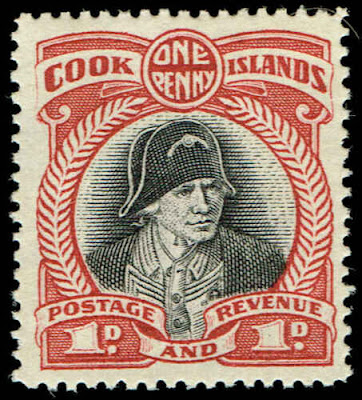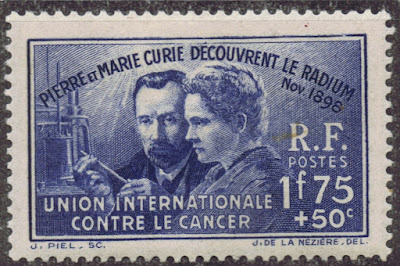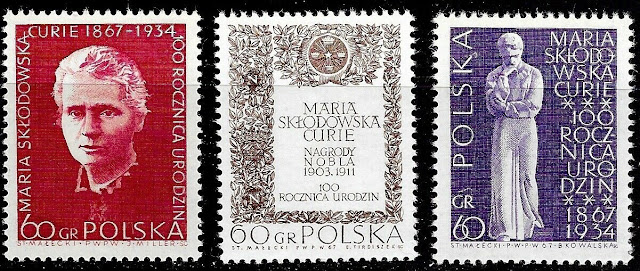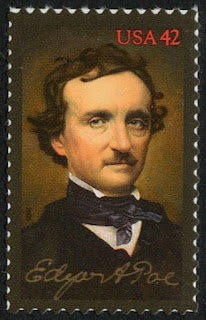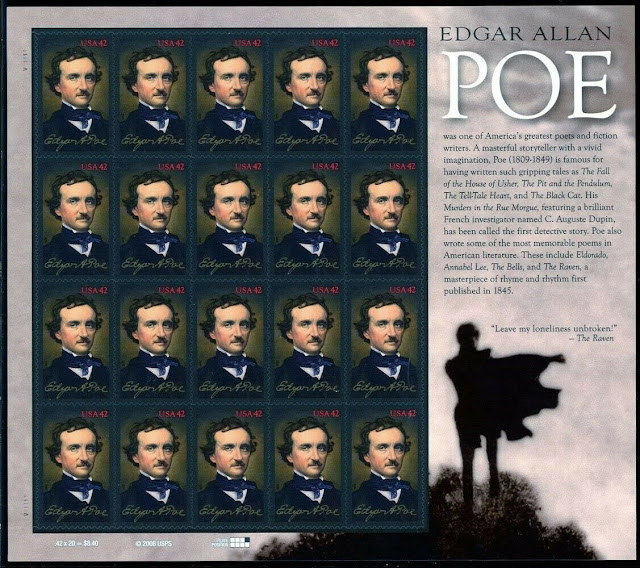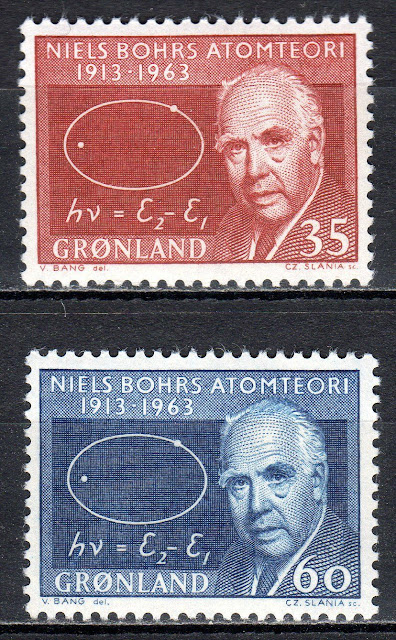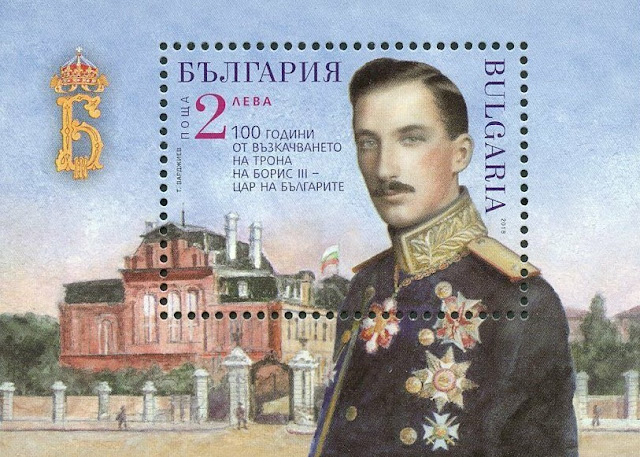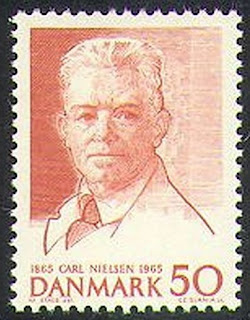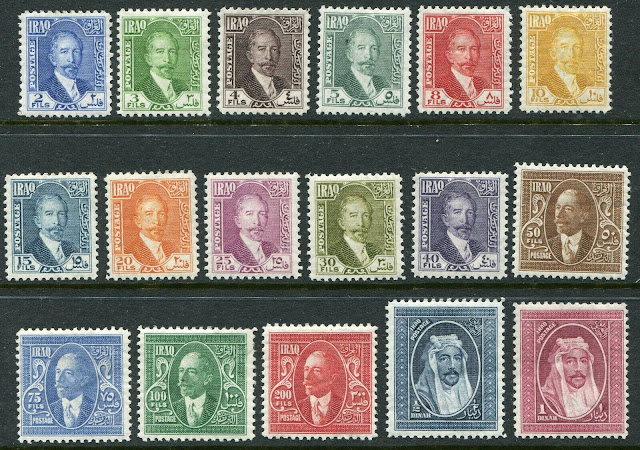Thursday, November 07, 2019
November 7th in stamps Cornelis Drebbel, Marie Curie, James Cook, Ingrid of Sweden
Monday, October 07, 2019
October 7th in stamps Willem II, Nicholas I of Montenegro, Niels Bohr, Edgar Allan Poe
1840 – Willem II becomes King of the Netherlands.
William II (Willem Frederik George Lodewijk, anglicized as William Frederick George Louis; 6 December 1792 – 17 March 1849) was King of the Netherlands, Grand Duke of Luxembourg, and Duke of Limburg.
William II was the son of William I and Wilhelmine of Prussia. When his father, who up to that time ruled as sovereign prince, proclaimed himself king in 1815, he became Prince of Orange as heir apparent of the Kingdom of the Netherlands. With the abdication of his father on 7 October 1840, William II became king. During his reign, the Netherlands became a parliamentary democracy with the new constitution of 1848.
William II was married to Anna Pavlovna of Russia. They had four sons and one daughter. William II died on 17 March 1849 and was succeeded by his son William III.
Dutch stamps from 1913 depicting Willem II
1841 Born: Nicholas I of Montenegro (d. 1921)
Nikola I Petrović-Njegoš (Serbian Cyrillic: Никола I Петровић-Његош; 7 October 1841 – 1 March 1921) was the ruler of Montenegro from 1860 to 1918, reigning as sovereign prince from 1860 to 1910 and as king from 1910 to 1918.
He gave Montenegro its first constitution in 1905 following pressure from a population eager for more freedom. He also introduced west-European style press freedom and criminal law codes. In 1906, he introduced Montenegrin currency, the perper. On 28 August 1910, during the celebration of his jubilee, he assumed the title of king, in accordance with a petition from the Skupština. He was at the same time gazetted field-marshal in the Russian army, an honor never previously conferred on any foreigner except the Duke of Wellington. When the Balkan Wars broke out in 1912 King Nikola was one of the most enthusiastic of the allies. He wanted to drive the Ottomans completely out of Europe. He defied the Powers and captured Scutari despite the fact that they blockaded the whole coast of Montenegro. Again in the Great War which began in 1914 he was the first to go to Serbia's aid to repel the Austrian forces from the Balkan Peninsula.
In January 1916, after the defeat of Serbia, Montenegro was also conquered by Austria-Hungary, and the King fled to Italy and then to France. The government transferred its operations to Bordeaux.
After the end of the First World War, a meeting in Podgorica voted to depose Nikola and annex Montenegro to Serbia. A few months later, Serbia (including Montenegro) merged with the former South Slav territories of Austria-Hungary to form the Kingdom of Serbs, Croats and Slovenes, which was renamed Yugoslavia in 1929. Nikola went into exile in France in 1918, but continued to claim the throne until his death in Antibes three years later. He was buried in Italy. In 1989, the remains of Nikola, his queen Milena, and two of their twelve children were re-buried in Montenegro.
Stamps from Montenegro depicting Nicholas I
1849 Died: Edgar Allan Poe, American short story writer, poet, and critic (b. 1809)
Edgar Allan Poe (January 19, 1809 – October 7, 1849) was an American writer, poet, editor, and literary critic. Poe is best known for his poetry and short stories, particularly his tales of mystery and the macabre. He is widely regarded as a central figure of Romanticism in the United States and of American literature as a whole, and he was one of the country's earliest practitioners of the short story. He is also generally considered the inventor of the detective fiction genre and is further credited with contributing to the emerging genre of science fiction. Poe was the first well-known American writer to earn a living through writing alone, resulting in a financially difficult life and career.
Poe was born in Boston, the second child of actors David and Elizabeth "Eliza" Poe. His father abandoned the family in 1810, and his mother died the following year. Thus orphaned, Poe was taken in by John and Frances Allan of Richmond, Virginia. They never formally adopted him, but he was with them well into young adulthood. Tension developed later as Poe and John Allan repeatedly clashed over Poe's debts, including those incurred by gambling, and the cost of Poe's education. Poe attended the University of Virginia but left after a year due to lack of money. He quarreled with Allan over the funds for his education and enlisted in the United States Army in 1827 under an assumed name. It was at this time that his publishing career began with the anonymous collection Tamerlane and Other Poems (1827), credited only to "a Bostonian". Poe and Allan reached a temporary rapprochement after the death of Allan's wife in 1829. Poe later failed as an officer cadet at West Point, declaring a firm wish to be a poet and writer, and he ultimately parted ways with Allan.
Poe switched his focus to prose and spent the next several years working for literary journals and periodicals, becoming known for his own style of literary criticism. His work forced him to move among several cities, including Baltimore, Philadelphia, and New York City. He married his 13-year-old cousin, Virginia Clemm, in 1836, but Virginia died of tuberculosis in 1847. In January 1845, Poe published his poem "The Raven" to instant success. He planned for years to produce his own journal The Penn (later renamed The Stylus), but before it could be produced, he died in Baltimore on October 7, 1849, at age 40. The cause of his death is unknown and has been variously attributed to disease, alcoholism, substance abuse, suicide, and other causes.
Poe and his works influenced literature around the world, as well as specialized fields such as cosmology and cryptography. He and his work appear throughout popular culture in literature, music, films, and television. A number of his homes are dedicated museums today. The Mystery Writers of America present an annual award known as the Edgar Award for distinguished work in the mystery genre.
US stamps depicting Edgar Allan Poe
Niels Henrik David Bohr (7 October 1885 – 18 November 1962) was a Danish physicist who made foundational contributions to understanding atomic structure and quantum theory, for which he received the Nobel Prize in Physics in 1922. Bohr was also a philosopher and a promoter of scientific research.
Bohr developed the Bohr model of the atom, in which he proposed that energy levels of electrons are discrete and that the electrons revolve in stable orbits around the atomic nucleus but can jump from one energy level (or orbit) to another. Although the Bohr model has been supplanted by other models, its underlying principles remain valid. He conceived the principle of complementarity: that items could be separately analysed in terms of contradictory properties, like behaving as a wave or a stream of particles. The notion of complementarity dominated Bohr's thinking in both science and philosophy.
Bohr founded the Institute of Theoretical Physics at the University of Copenhagen, now known as the Niels Bohr Institute, which opened in 1920. Bohr mentored and collaborated with physicists including Hans Kramers, Oskar Klein, George de Hevesy, and Werner Heisenberg. He predicted the existence of a new zirconium-like element, which was named hafnium, after the Latin name for Copenhagen, where it was discovered. Later, the element bohrium was named after him.
During the 1930s, Bohr helped refugees from Nazism. After Denmark was occupied by the Germans, he had a famous meeting with Heisenberg, who had become the head of the German nuclear weapon project. In September 1943, word reached Bohr that he was about to be arrested by the Germans, and he fled to Sweden. From there, he was flown to Britain, where he joined the British Tube Alloys nuclear weapons project, and was part of the British mission to the Manhattan Project. After the war, Bohr called for international cooperation on nuclear energy. He was involved with the establishment of CERN and the Research Establishment Risø of the Danish Atomic Energy Commission and became the first chairman of the Nordic Institute for Theoretical Physics in 1957.
Stamps from Denmark and Greenland depicting Niels Bohr
Thursday, October 03, 2019
October 3rd in stamps Boris III, Yugoslavia, Iraq, Carl Nielsen
Boris III (30 January 1894 – 28 August 1943), originally Boris Klemens Robert Maria Pius Ludwig Stanislaus Xaver (Boris Clement Robert Mary Pius Louis Stanislaus Xavier), was the Tsar of the Kingdom of Bulgaria from 1918 until his death.
The eldest son of Ferdinand I, Boris acceded to the throne upon the abdication of his father, following Bulgaria's defeat during World War I. This was the country's second major defeat in only five years, after the disastrous Second Balkan War of 1913. Under the Treaty of Neuilly, Bulgaria was forced to cede new territories and pay crippling reparations to its neighbours, thereby threatening political and economic stability. Two political forces, the Agrarian Union and the Communist Party, were calling for the overthrowing of the monarchy and the change of the government. It was in these circumstances that Boris succeeded to the throne.
Some stamps issued by Bulgaria depicting King Boris III
1929 – The Kingdom of Serbs, Croats and Slovenes is renamed to Yugoslavia.
The Kingdom of Yugoslavia (Serbo-Croatian: Краљевина Југославија / Kraljevina Jugoslavija; Slovene: Kraljevina Jugoslavija) was a state in Southeast Europe and Central Europe that existed from 1918 until 1941, during the interwar period and beginning of World War II. From 1918 to 1929, it was officially called the Kingdom of Serbs, Croats and Slovenes (Serbo-Croatian: Краљевина Срба, Хрвата и Словенаца / Kraljevina Srba, Hrvata i Slovenaca; Slovene: Kraljevina Srbov, Hrvatov in Slovencev), but the term "Yugoslavia" (literally "Land of Southern Slavs") was its colloquial name due to its origins.The official name of the state was changed to "Kingdom of Yugoslavia" by King Alexander I on 3 October 1929.
The preliminary kingdom was formed in 1918 by the merger of the provisional State of Slovenes, Croats and Serbs (itself formed from territories of the former Austro-Hungarian Empire) with the formerly independent Kingdom of Serbia. The Kingdom of Montenegro had united with Serbia five days previously, whereas the regions of Kosovo, Vojvodina, Vardar Macedonia and most of Bosnia were parts of Serbia prior to the unification.
The state was ruled by the Serb dynasty of Karađorđević, which previously ruled the Kingdom of Serbia under Peter I from 1903 (after the May Overthrow) onward. Peter I became the first king of Yugoslavia until his death in 1921. He was succeeded by his son Alexander I, who had been regent for his father. He was known as "Alexander the Unifier" and he renamed the kingdom "Yugoslavia" in 1929. He was assassinated in Marseille by Vlado Chernozemski, a member of the Internal Macedonian Revolutionary Organization (IMRO), during his visit to France in 1934. The crown passed to his then-still under-aged son Peter. Alexander's cousin Paul ruled as Prince regent until 1941, when Peter II came of age. The royal family flew to London the same year, prior to the country being invaded by the Axis powers.
In April 1941, the country was occupied and partitioned by the Axis powers. A royal government-in-exile, recognized by the United Kingdom and, later, by all the Allies, was established in London. In 1944, after pressure from the British Prime Minister Winston Churchill, the King recognized the government of Democratic Federal Yugoslavia as the legitimate government. This was established on 2 November following the signing of the Treaty of Vis by Ivan Šubašić (on behalf of the Kingdom) and Josip Broz Tito (on behalf of the Yugoslav Partisans).
Some Yugoslavian stamps issued right after the name change, including overprints with the new name on previously issued stamps to commemorate 1000 years since king Tomislav from Croatia became king
See also... The revenge of Yugoslavia on Bosnian stamps of 1906
1931 Died: Carl Nielsen, Danish violinist, composer, and conductor (b. 1865)
Carl August Nielsen (9 June 1865 – 3 October 1931) was a Danish composer, conductor and violinist, widely recognized as his country's most prominent composer.
Brought up by poor yet musically talented parents on the island of Funen, he demonstrated his musical abilities at an early age. He initially played in a military band before attending the Royal Danish Academy of Music in Copenhagen from 1884 until December 1886. He premiered his Op. 1, Suite for Strings, in 1888, at the age of 23. The following year, Nielsen began a 16-year stint as a second violinist in the Royal Danish Orchestra under the conductor Johan Svendsen, during which he played in Giuseppe Verdi's Falstaff and Otello at their Danish premieres. In 1916, he took a post teaching at the Royal Danish Academy and continued to work there until his death.
Although his symphonies, concertos and choral music are now internationally acclaimed, Nielsen's career and personal life were marked by many difficulties, often reflected in his music. The works he composed between 1897 and 1904 are sometimes ascribed to his "psychological" period, resulting mainly from a turbulent marriage with the sculptor Anne Marie Brodersen. Nielsen is especially noted for his six symphonies, his Wind Quintet and his concertos for violin, flute and clarinet. In Denmark, his opera Maskarade and many of his songs have become an integral part of the national heritage. His early music was inspired by composers such as Brahms and Grieg, but he soon developed his own style, first experimenting with progressive tonality and later diverging even more radically from the standards of composition still common at the time. Nielsen's sixth and final symphony, Sinfonia semplice, was written in 1924–25. He died from a heart attack six years later, and is buried in Vestre Cemetery, Copenhagen.
Nielsen maintained the reputation of a musical outsider during his lifetime, both in his own country and internationally. It was only later that his works firmly entered the international repertoire, accelerating in popularity from the 1960s through Leonard Bernstein and others. In Denmark, Nielsen's reputation was sealed in 2006 when three of his compositions were listed by the Ministry of Culture amongst the twelve greatest pieces of Danish music. For many years, he appeared on the Danish hundred-kroner banknote. The Carl Nielsen Museum in Odense documents his life and that of his wife. Between 1994 and 2009 the Royal Danish Library, sponsored by the Danish government, completed the Carl Nielsen Edition, freely available online, containing background information and sheet music for all of Nielsen's works, many of which had not been previously published.
Danish stamp depicting Carl Nielsen
The country today known as Iraq was a region of the Ottoman Empire until the partition of the Ottoman Empire in the 20th century. It was made up of three provinces, called vilayets in the Ottoman language: Mosul Vilayet, Baghdad Vilayet, and Basra Vilayet. These three provinces were joined into one Kingdom by the British after the region became a League of Nations mandate, administered under British control, with the name "State of Iraq". A fourth province, which Iraqi nationalists considered part of Upper Mesopotamia was ultimately added to Syria. In line with their "Sharifian Solution" policy, the British established the Hashemite king, Faisal I of Iraq, who had been forced out of Syria by the French, as their client ruler. Likewise, British authorities selected Sunni Arab elites from the region for appointments to government and ministry offices.
Faced with spiraling costs and influenced by the public protestations of the war hero T. E. Lawrence in The Times, Britain replaced Arnold Wilson in October 1920 with a new Civil Commissioner, Sir Percy Cox. Cox managed to quell a rebellion, yet was also responsible for implementing the fateful policy of close co-operation with Iraq's Sunni minority. The institution of slavery was abolished in the 1920s.
Britain granted independence to the Kingdom of Iraq in 1932, on the urging of King Faisal, though the British retained military bases, local militia in the form of Assyrian Levies, and transit rights for their forces. King Ghazi ruled as a figurehead after King Faisal's death in 1933, while undermined by attempted military coups, until his death in 1939. Ghazi was followed by his underage son, Faisal II. 'Abd al-Ilah served as Regent during Faisal's minority.
Stamps issued after the independence from the United Kingdom


